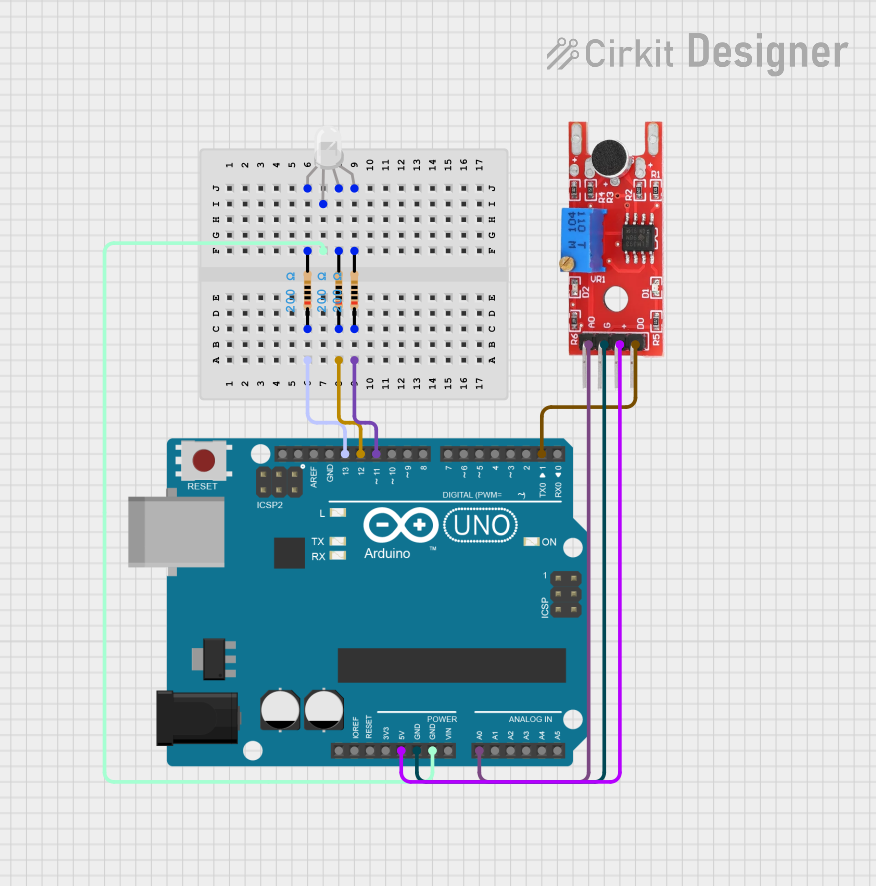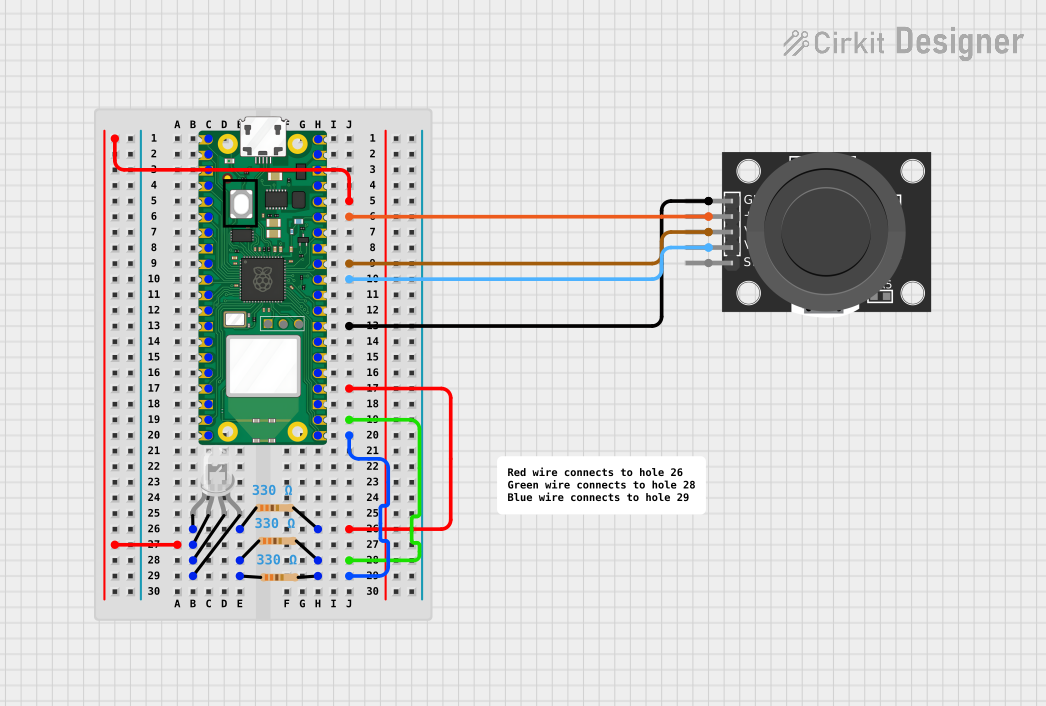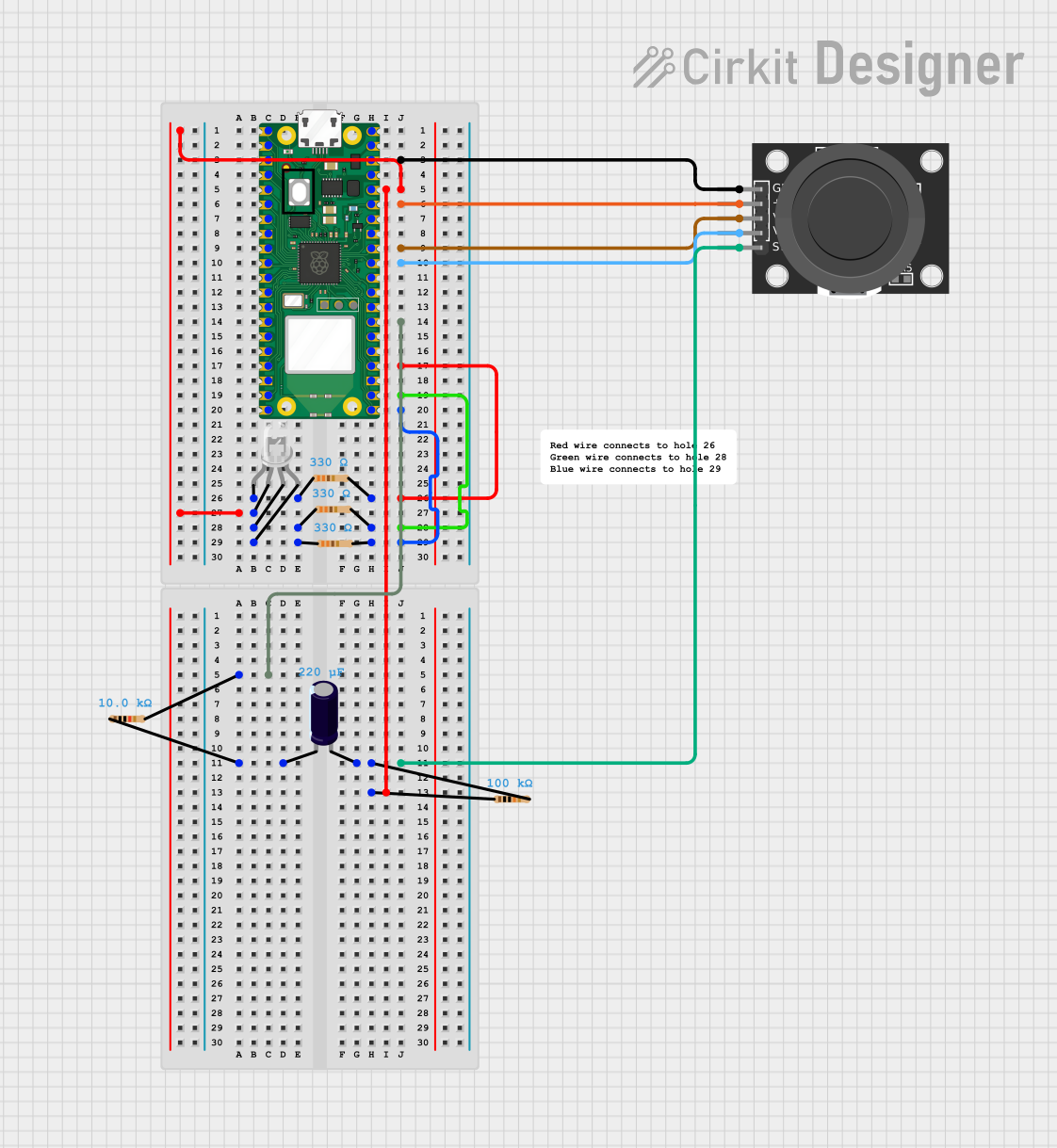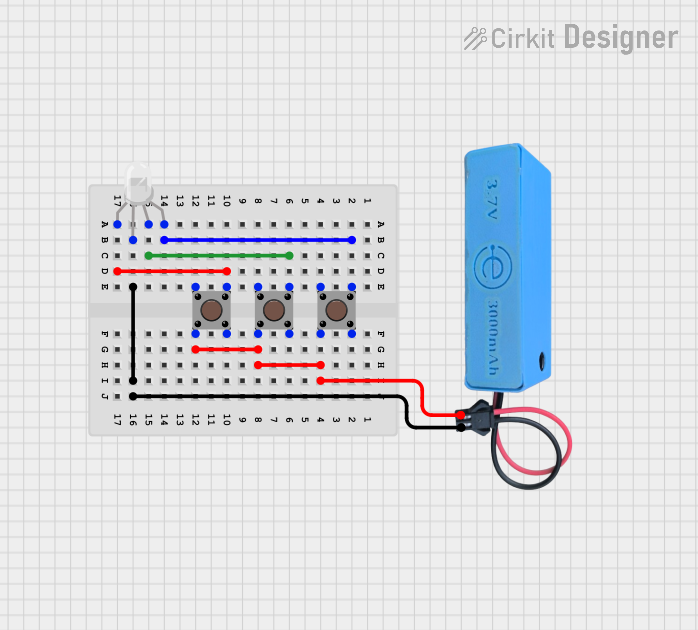
How to Use KY-016 RGB LED: Examples, Pinouts, and Specs

 Design with KY-016 RGB LED in Cirkit Designer
Design with KY-016 RGB LED in Cirkit DesignerIntroduction
The KY-016 RGB LED module is a versatile electronic component that allows users to create a wide spectrum of colors by mixing red, green, and blue light. This module is widely used in DIY projects, educational purposes, and decorative applications where colorful lighting effects are desired. It is compatible with various microcontroller platforms, including Arduino, Raspberry Pi, and others.
Explore Projects Built with KY-016 RGB LED

 Open Project in Cirkit Designer
Open Project in Cirkit Designer
 Open Project in Cirkit Designer
Open Project in Cirkit Designer
 Open Project in Cirkit Designer
Open Project in Cirkit Designer
 Open Project in Cirkit Designer
Open Project in Cirkit DesignerExplore Projects Built with KY-016 RGB LED

 Open Project in Cirkit Designer
Open Project in Cirkit Designer
 Open Project in Cirkit Designer
Open Project in Cirkit Designer
 Open Project in Cirkit Designer
Open Project in Cirkit Designer
 Open Project in Cirkit Designer
Open Project in Cirkit DesignerTechnical Specifications
Key Technical Details
- Operating Voltage: Typically 5V
- Forward Current (per LED): 20mA (typical)
- Peak Forward Current (per LED): 50mA (max)
- LED Wavelengths:
- Red: 620-625 nm
- Green: 515-520 nm
- Blue: 465-470 nm
Pin Configuration and Descriptions
| Pin Number | Description |
|---|---|
| 1 | R (Red) |
| 2 | G (Green) |
| 3 | B (Blue) |
| 4 | Common Anode (V+) |
Usage Instructions
Connecting the KY-016 to a Circuit
- Connect the common anode (V+) pin to the positive supply voltage (typically 5V).
- Connect each of the R, G, and B pins to a digital output pin on your microcontroller through a current-limiting resistor (typically 220 ohms to 330 ohms).
- Ensure that the microcontroller's ground is connected to the negative side of the power supply.
Controlling the KY-016 with an Arduino
To control the KY-016 RGB LED with an Arduino UNO, you can use the following example code:
// Define the RGB LED pins
const int redPin = 11; // R pin connected to digital pin 11
const int greenPin = 10; // G pin connected to digital pin 10
const int bluePin = 9; // B pin connected to digital pin 9
void setup() {
// Set the RGB LED pins as outputs
pinMode(redPin, OUTPUT);
pinMode(greenPin, OUTPUT);
pinMode(bluePin, OUTPUT);
}
void loop() {
// Set the color to red
analogWrite(redPin, 255); // Red at full intensity
analogWrite(greenPin, 0); // Green off
analogWrite(bluePin, 0); // Blue off
delay(1000); // Wait for 1 second
// Set the color to green
analogWrite(redPin, 0); // Red off
analogWrite(greenPin, 255); // Green at full intensity
analogWrite(bluePin, 0); // Blue off
delay(1000); // Wait for 1 second
// Set the color to blue
analogWrite(redPin, 0); // Red off
analogWrite(greenPin, 0); // Green off
analogWrite(bluePin, 255); // Blue at full intensity
delay(1000); // Wait for 1 second
}
Important Considerations and Best Practices
- Always use current-limiting resistors to prevent damage to the LEDs.
- Avoid exceeding the peak forward current to ensure the longevity of the module.
- Use PWM (Pulse Width Modulation) to control the intensity of each LED for creating custom colors.
Troubleshooting and FAQs
Common Issues
- LEDs are not lighting up: Check the connections and ensure that the current-limiting resistors are in place. Also, verify that the power supply voltage matches the module's requirements.
- Colors are not as expected: Ensure that the PWM values in the code match the desired color mix. Adjust the values to fine-tune the color output.
Solutions and Tips for Troubleshooting
- Double-check wiring and solder joints for any loose connections or shorts.
- Use a multimeter to verify that the appropriate voltage is reaching the RGB LED pins.
- If using an Arduino, ensure that the correct pins are defined in the code and that they are configured as outputs.
FAQs
Q: Can I use the KY-016 RGB LED module with a 3.3V system? A: Yes, but the brightness may be reduced. Use appropriate current-limiting resistors for 3.3V operation.
Q: How can I create different colors with the KY-016? A: By adjusting the PWM values sent to each color pin, you can mix red, green, and blue to create a wide range of colors.
Q: Is it possible to chain multiple KY-016 modules together? A: Yes, you can connect multiple modules in parallel, ensuring each has its own set of current-limiting resistors.
This documentation provides a comprehensive guide to using the KY-016 RGB LED module in your projects. With proper usage and handling, this module can add vibrant and dynamic lighting effects to your electronic designs.